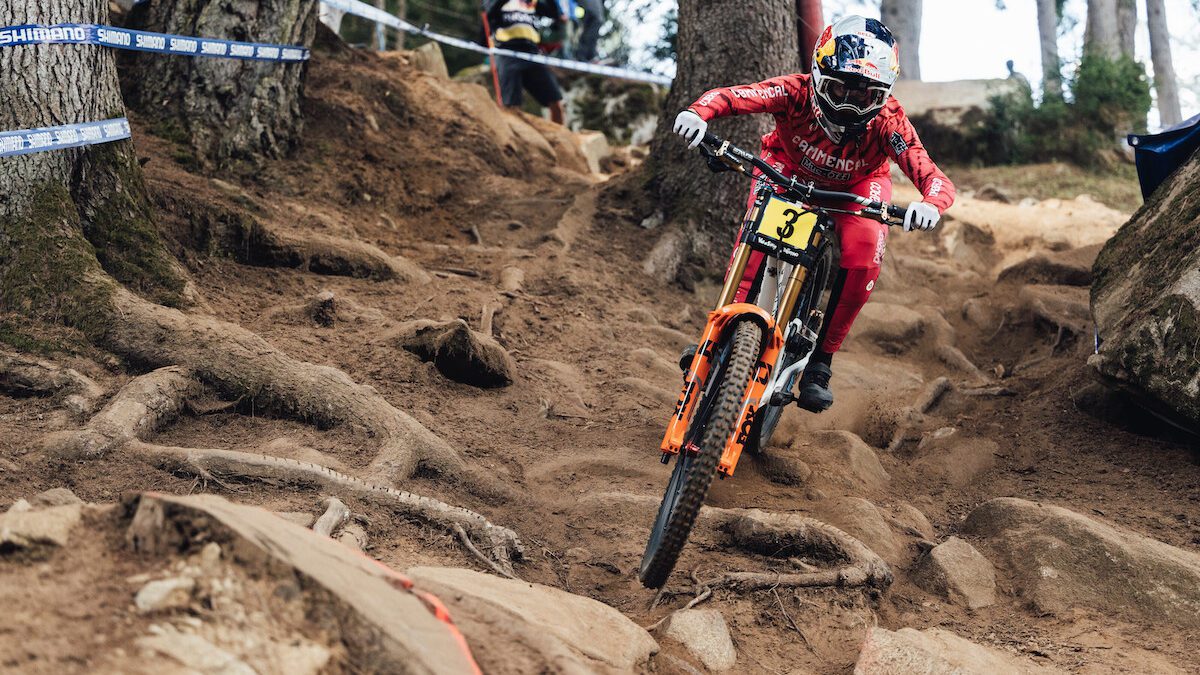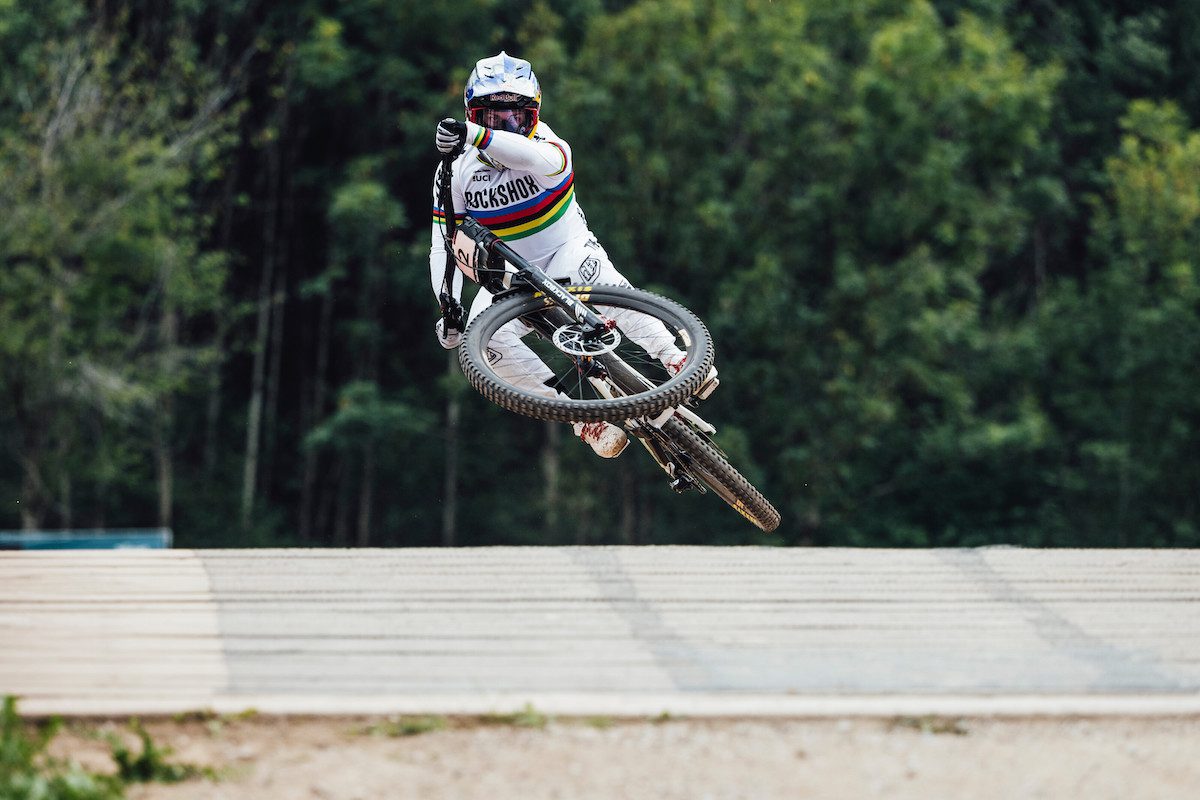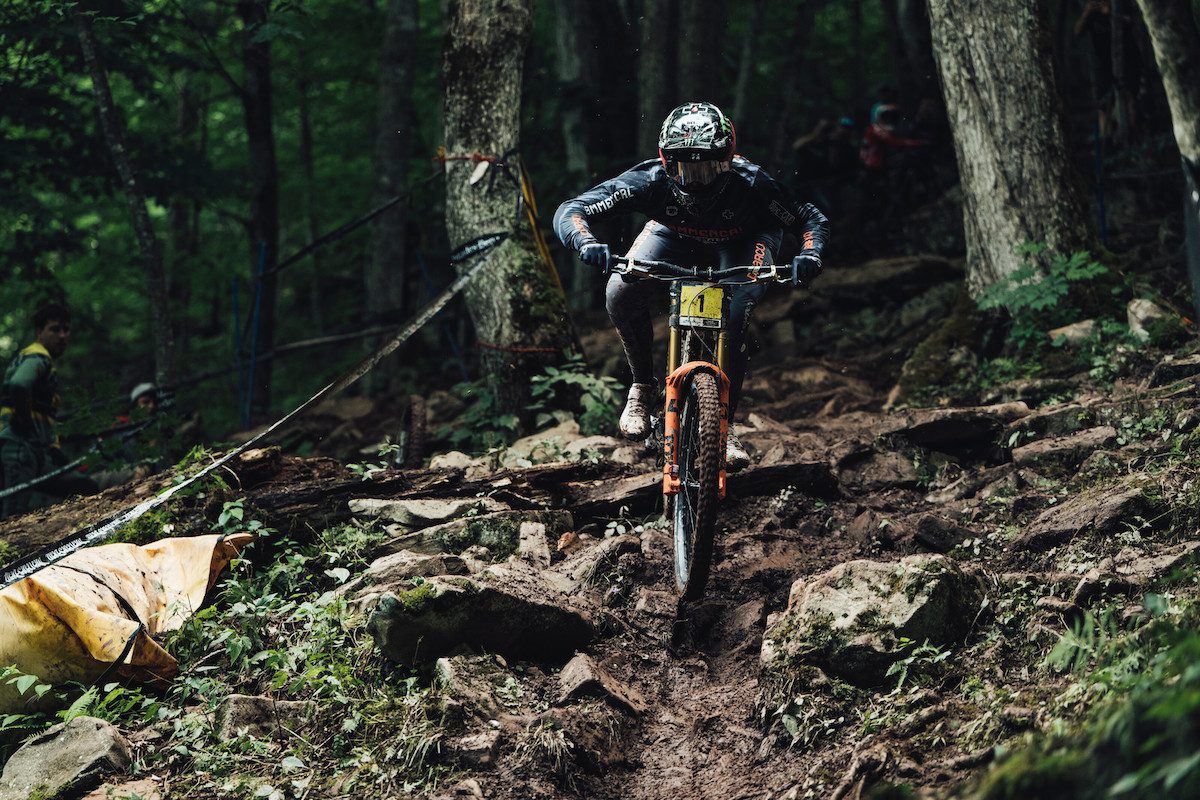Inside the UCI’s (extensive) new rule changes
Is downhill's Lycra ban over?

UCI announced sweeping changes to the format of World Cup racing on Friday, which means there is a whole new rat’s nest of UCI rules to dig through. The major changes were included in the press release, like the inclusion of enduro as a World Cup event and the addition of a DH semi-final. But there are some sneaky changes lurking in the rule changes, too.
Like the end of the UCI’s ban on Lycra in downhill racing. There are, of course, more practical and meaningful changes than the return – or legalization – of very tight clothing in downhill. Like how protected rider system for downhill will work with semi-finals. Read through for a list of the more important changes coming in 2023. If you want to read through the edited text of every clause of the rules yourself, dive into all 48 pages here.
*For all articles quoted from the UCI rules, words in bold are new text. Words crossed out are old text that is being removed.

Lycra’s back, baby
Let’s start with what everyone really wants to know about: the end of the UCI’s long-running ban on lycra in downhill racing (Article 4.3.011).
The old wording, “All lycra elastine based tight-fitting clothing is not permitted.” is gone. It was vague and, as current race clothing makes clear, did very little to prevent the return of incredibly tight clothing in downhill racing.
In place of the succinct, but some would say unsuccessful rule, is a much longer text. The rule is now broken up into jersey and pants/shorts-specific commandments.
For pants, Article4.3.011 now reads:
“Long pants or short pants combined with suitable knee and shin protection are authorised. Such long or short pants should be of a type that is specifically designed and sold for use in BMX Racing or Mountain Bike downhill events. Long pants of the type described above must be of one–piece construction and made of tear–resistant material. They should cover the entire length of both legs until just above the shoe or ankle. Short pants of the type described above must be of one–piece construction and made of tear–resistant material. They should be worn together with suitable leg protection, that covers the entire knee and the entire shin until just above the ankle.”
What does that mean? Well, maybe not that much. As long as a pant is made of tear-resistant material and “designed and sold for use in BMX Racing or Mountain Bike downhill events,” the pants can be whatever they want, and as tight as riders want.
For jerseys, the rules are a bit more strict.
“The jersey shall be a long-sleeved shirt whose sleeves extend down to the rider’s wrists. Jerseys used in downhill events should be of a type specifically designed and sold for use in BMX Racing or Mountain Bike downhill events. Jerseys designed for road cycling, skinsuits, or one-piece suits comprising the jersey and the pants/shorts are not permitted for use in downhill events.
The jersey must be either close fitting around the waist or must be tucked into the pants before the start to not cause interference.”
With this section, the UCI rules out skinsuits, one-piece outfits (which hopefully doesn’t include overalls), and road cycling jerseys, though the rule still doesn’t say anything specifically about lycra. But manners are important, and UCI does want riders to either tuck their jersey into their pants, or wear something close fitting.
OK, on to more important rules.

Downhill Semi-Finals
UCI is shaking up how downhill runs in a big way for 2023 by adding another day of racing to the World Cup schedule. That is a huge change, and brings an entirely new qualification process for race weekends. Qualification for finals has always been controversial in downhill and the new system will surely ruffle a few feathers while making others happy.
Race week timeline
Interestingly, the timeline for training remains unchanged at this point. 4.11.006 still says that track walk takes place three days before the final, and that timed training takes place two days before finals. That leaves it unclear where the new semi-final will fit into the race schedule.
Qualifications
For juniors, there is less change and no semi-final. Junior women now have to qualifying instead of completing a seeding run. Only the top 10 women juniors move on to the final. It is still the top 25 junior men moving on to finals.
For elites, the semi-final completely changes qualifying (Article 4.11.010). The top 60 men and 15 women move from qualifying to the semi-final. That’s the same as in 2022. From there, the field for the live broadcast is further reduced. Only the top 30 men and 10 women move from semi-finals to the final round.
All that extra racing isn’t for nothing, though. All three rounds now award UCI World Cup standing points, except for at the final World Cup of the year. Like in years past, only finals count for points at the last round.
This will make the season overall way more interesting, and complicated to follow, as the semi-final points aren’t trivial. In the current document, winning semi-finals earns 200 points while winning finals is 250. The drop-off is bigger for qualifications, but that’s still a solid advantage for anyone scoring well in the semis and finals. It could also create a larger gap between protected riders and non-protected riders in the overall standings as a bad qualifying run could mean missing out on semi- and final points.
It also means even fewer women make it to finals (10) than the already limited number that made it through in 2022 (15). Who knows why that was the direction UCI went.

Downhill protected riders
The protected rider system also gets weird with the addition of a semi-final. There are now different rules for who is guaranteed a start in the semi-final or finals. For anyone newer to downhill (that somehow made it this far into a story about arcane UCI rules) the protected rider system allows top riders don’t qualify based on time to advance to finals. It basically means one mechanical or crash in qualifying is less likely to ruin your season by ending a run at the overall title.
Here are the new rules proposed for 2023 (again, bold means a new addition to the rules)
4.11.014 Protected riders to the semi–final are:
1. riders with season long race numbers (i.e. ranked in the top 5 women elite and the top 10 men elite of the final UCI World Cup standings of the previous season)
2. the best ranked riders from the current UCI World Cup standings, that are not included in point 1 above, until a total of 10 women elite and 20 men elite are reached
Protected riders to the final are:
1. riders ranked in the top 3 women elite and top 5 men elite of the final UCI World Cup standings of the previous season
2. men and women junior riders ranked in the top 3 of the current UCI World Cup standings. At the first UCI World Cup round of the season there will be no protected junior riders.
For the first UCI World Cup round of the season, the top 10 women elite and the top 20 men elite of the final UCI World Cup standings of the previous season are “protected” for the semi–final.
What does that mean? Well, fewer protected riders are guaranteed a spot on the live broadcast, for one. And fewer protected riders with a guaranteed spot in the finals. It also means protected riders can make a mistake in qualifying, but not in finals. Only the top three women and top five men from the previous year’s standings have a chance guaranteed spot in finals. It also means the bulk of the 30 men and 10 women in the final, and on the live broadcast, will be the fastest riders on any given weekend.
Race radios could be coming to mountain biking
A quieter rule change relates to race radios. Once forbidden, article 4.1.038 now reads “The use of radio links or other remote means of communication with riders is forbidden except at UCI World Cups and subject to UCI authorisation” (again, bold is new text).
That could be very important for cross country racing, XCO and XCM, as coaches will be able to relay time gaps to riders much more easily and reliably.
XCC comes to U23
Short Track XC racing is now part of the under-23 World Cup race weekend. That mean’s one more chance for the U23s to race a World Cup every weekend. It also means that start order for the XCO is now, like in elites, determined by XCC results. The top 24 in the XCC race will take the front 24 positions on the start grid for that weekend’s XCO race. After that, it’s UCI XCO individual ranking, as in years past.
Calendar conflicts
To make sure the best riders are at the most important races, the UCI clarified that neither continental or, now, national championships may be held the same weekend as a World Cup in that discipline. Who would do such a thing? Well, Canadian enduro nationals were held the same weekend as the final EWS in 2022. Now that enduro is a World Cup event, that can’t happen again:
“The continental championships (CC) and national championships (CN) in a format may not be organised during a world cup event in the same format.”

